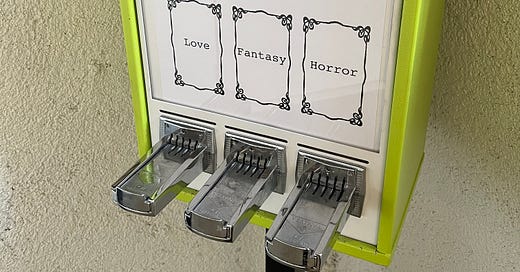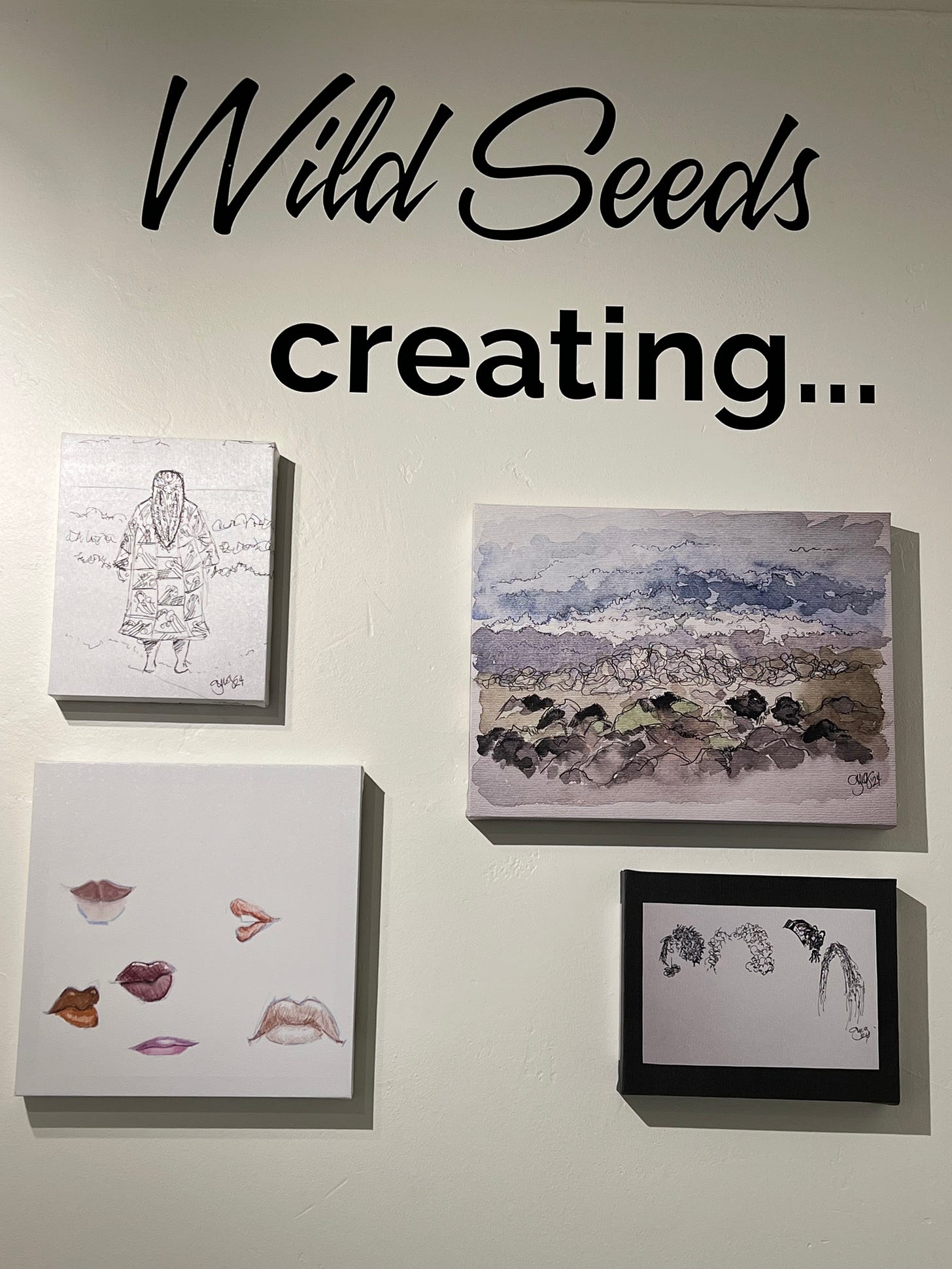During Christmas break I had a chance to visit Riverside Art Museum. It had been too long since I was there or at any art museum for that matter and what a time to return. At every corner new, interesting, provocative and pulling at my heart strings -art. I didn’t even know how much I craved the way artists are able to inspire and speak the truth until I stood in front of the poetry vending machine at the door and immediately paid $2 for two poems by Johnny Black.
Are you afraid of the dark? /You feel it at your back / the path to the bathroom / has grown in the dark / in the shadows / something moves / has sensed you / This purgatory/ will swallow you slow / and it will be hours / before a hint of the sun.
Poetry and art convey feelings in such a precise and immediate way.
Usually, I write about events and people in my community, Redlands, California. I focus on community building as a way to forge a better future for all of us. Read along as I venture out to our neighbor city, Riverside, and learn about art as community. Isn’t fear worse when you don’t know what to be scared of, when your imagination is running rampant and everything could be literally anything? Knowledge is power, because as soon as you realize what your fear is about, it’s not so scary anymore. Typically you would know what to do about it. Typically a friend or an ally would be all you need.
I continue through the exhibit and am fascinated by how artist Kelly Anderson-Staley is able to convey her family history, identity building within time, place and storytelling through photography. A wall full of baking pans are used as the frames and background for her family archival material, photos dissolving, partly visible, black and white. Just like memory is fragmented and sometimes you wish you could go back in time and replay what actually took place instead of looking at the baking pan full of holes and words getting erased the more you think of them.
There is a distinct feeling of pride here, for Black bodies and contrary thoughts. For pointing out how our earth is hurt, with a deep felt love coursing through the veins of each art piece. For how can one point out the discrepancies and unfair practices in this world without a rudimentary love underneath?
I am here for it. To take a hard look at hard truths. To believe there is more to this world than the unfairness of it all. And that is where art comes in, to tell us there is another way out of the chaos. The answer can be found in each one of us, in the radical love towards the right things. Like throwing roses at the riot police, which Andrew K. Thompsons photographic artwork tries to accomplish through “If the environment is a mess, I want my images to reflect that mess, not merely a record of the mess. I want my pictures to look like my environment: scared, broken, and rundown, not ‘good.’” His work makes me think that we can’t change things for the better by doing what we’ve always been doing. Positive change needs to be done in the least expected way rooted in love and curiosity, and art is the perfect medium for that.
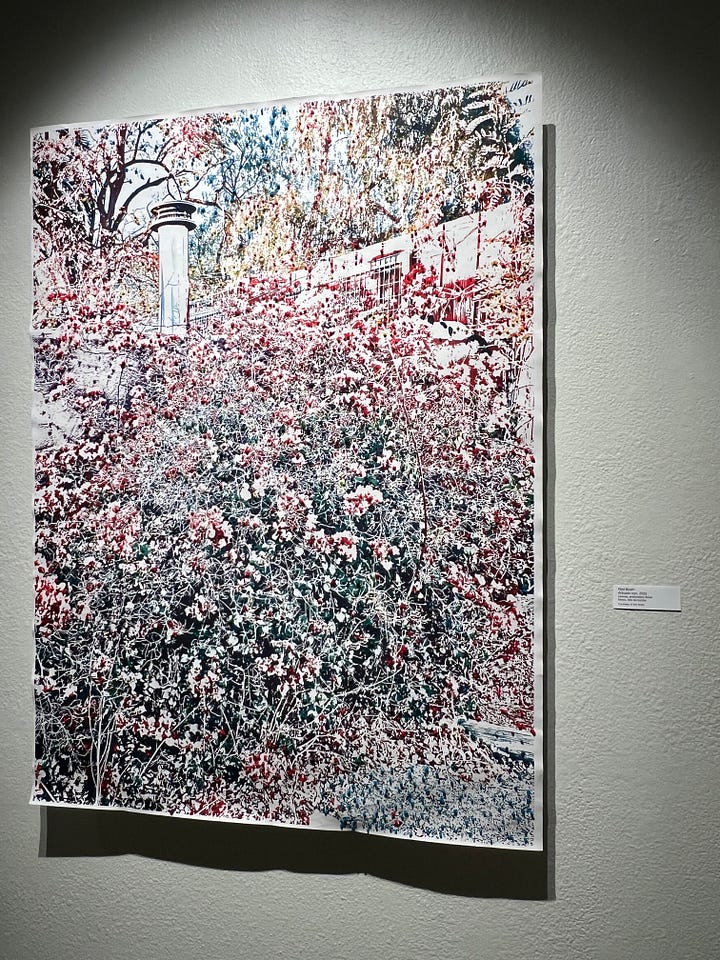

Who knew you could paint powerful floor to ceiling portraits with yarn and fiber? Artist Kandy G. Lopez does just that by depicting the marginalized that touch on ancestry, race, gender and class. And I wish I could touch the mural like portraits coming to life, almost stepping out of the frames and into the room. I am alone but not lonely in the exhibit hall.
When I step into the absurdity of artist Eve Wood’s world “Mostly Birds,” I know here is a person with a healthy dose of self irony. Her kinship to birds and their place in the human world make me think of equals, equal beings in this world. “I’ve always felt a kinship with animals, probably because I find people so complicated and unknowable,” she describes in the exhibit. I can tell she has no problem knowing birds, so colorful and exquisite in her water color strokes. Afterwards I got her book: “Remarks on color,” with a hilarious amount of shades of white: Timid white, weird-ass white, bright white, the smooth moves of soft white, and boorish beige. Below an example of Parakeet green which original artwork I enjoyed at the exhibit.
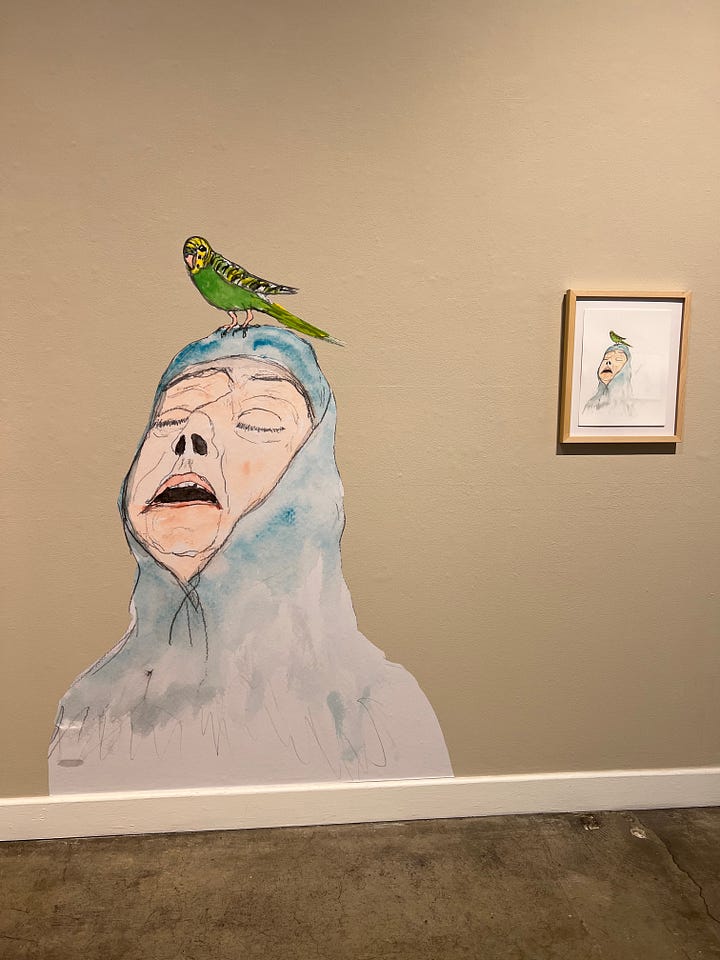
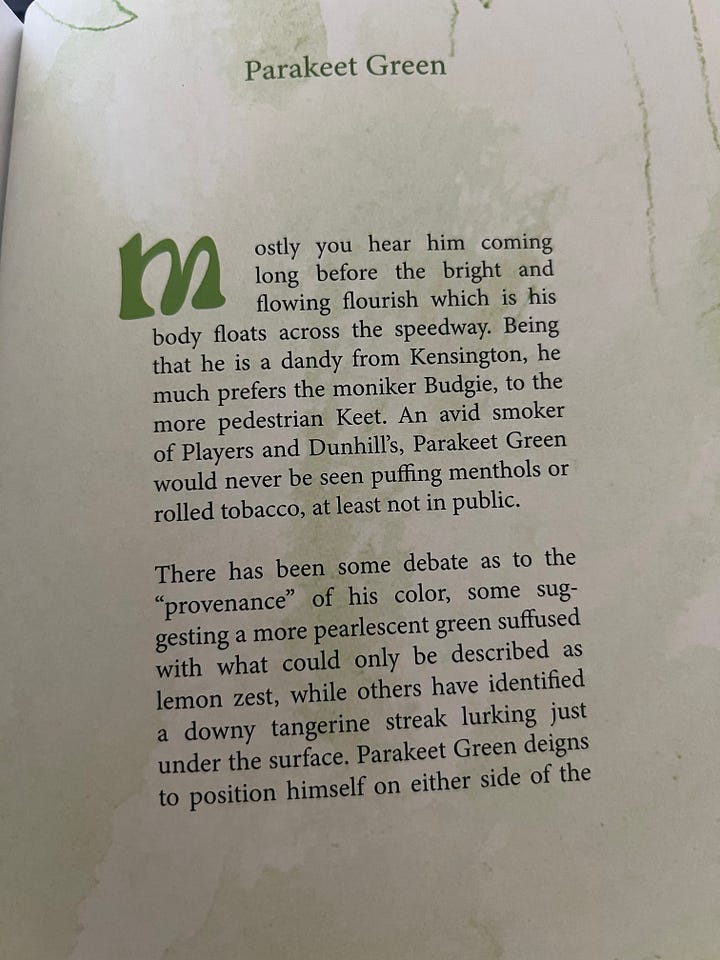
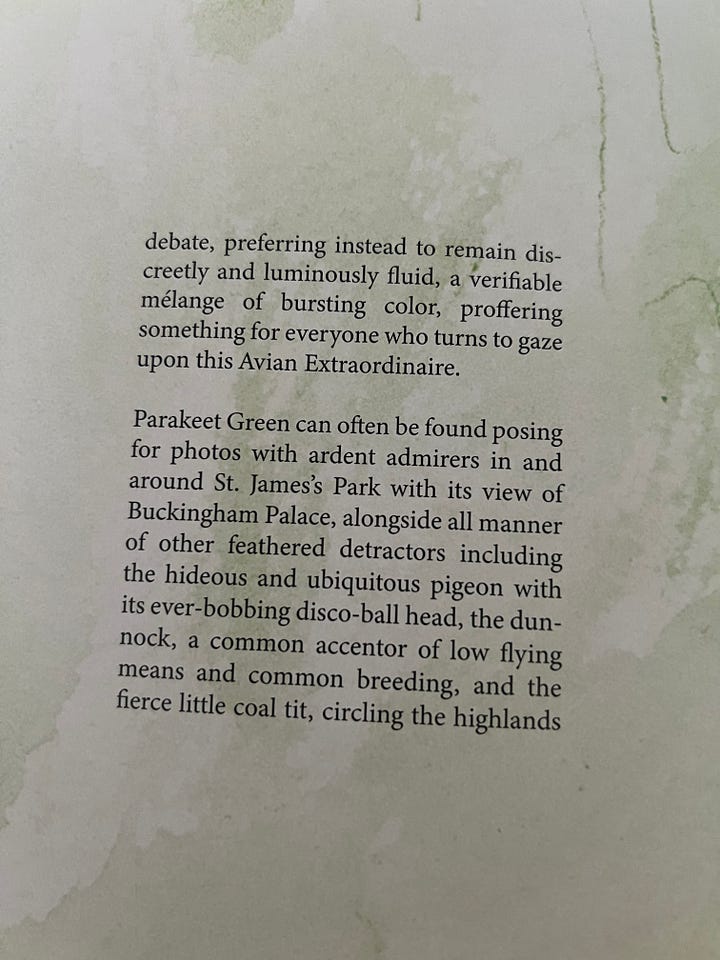

A place I want to spend much more time in is the exhibit “Wild Seeds on the Beach” which follow 12 Black poet and writer women and folx on a writing retreat: The idea of creating community between creatives, support and safe spaces.
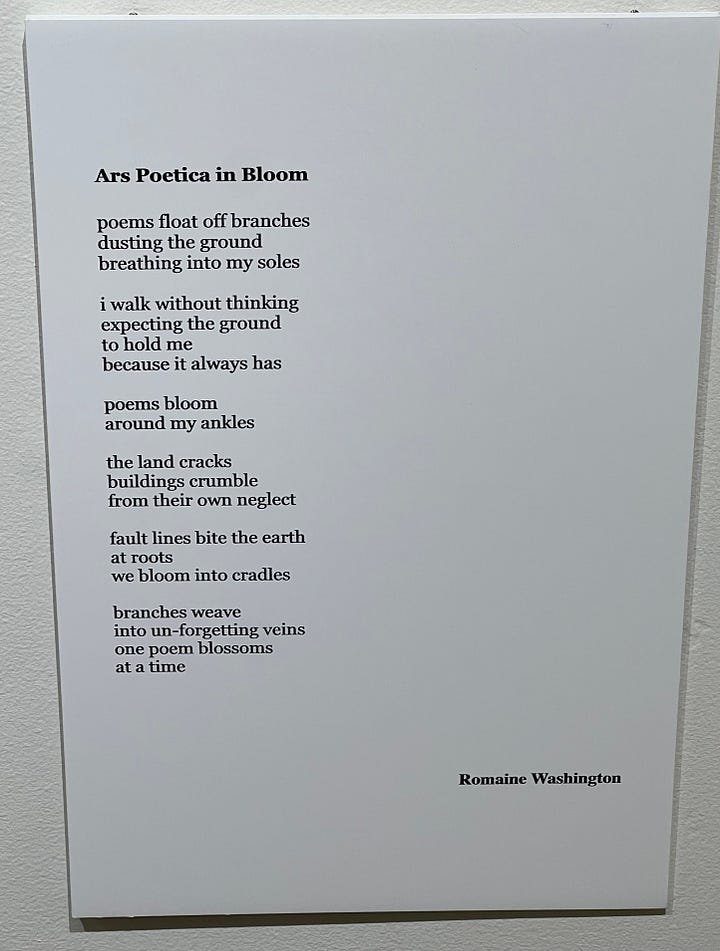

The photographs are beautiful and make me yearn for the constant movements and soothing lull of waves. I read each poem and understand that poetry can be a visual art, “Arms wrapped around thoughts / bouncing off of walls and down halls / where strangers die and sisters are born.” I am reminded of the writing retreats I’ve been on and how life changing those experiences have been, not outwardly but inwardly, in building my writer’s spine and identity. And I am not alone.
(P.S.: If there is a book published from this exhibit/writers’ retreat, let me know!)
The beginning of the exhibit was a small token of poetry and at the end poetry was the landing place for my visit at Riverside Art Museum. Most artists came from San Bernardino and Los Angeles. I thought of them as imaginative community storytellers.
I felt restored and inspired.
Art is necessary and art is part of the life source so needed in order to get through rough patches, in our lives and in the times we live in.
Please, visit Riverside Art Museum. It’s right next to the equally awesome Chicano art and culture museum, The Cheech! The exhibits I visited are up until March 2, 2025.
Thank you for reading. If you enjoyed this piece, please like below and subscribe to my Substack: www.siwheede.substack.com
And why not tell your friends and family to follow along? Please share.

